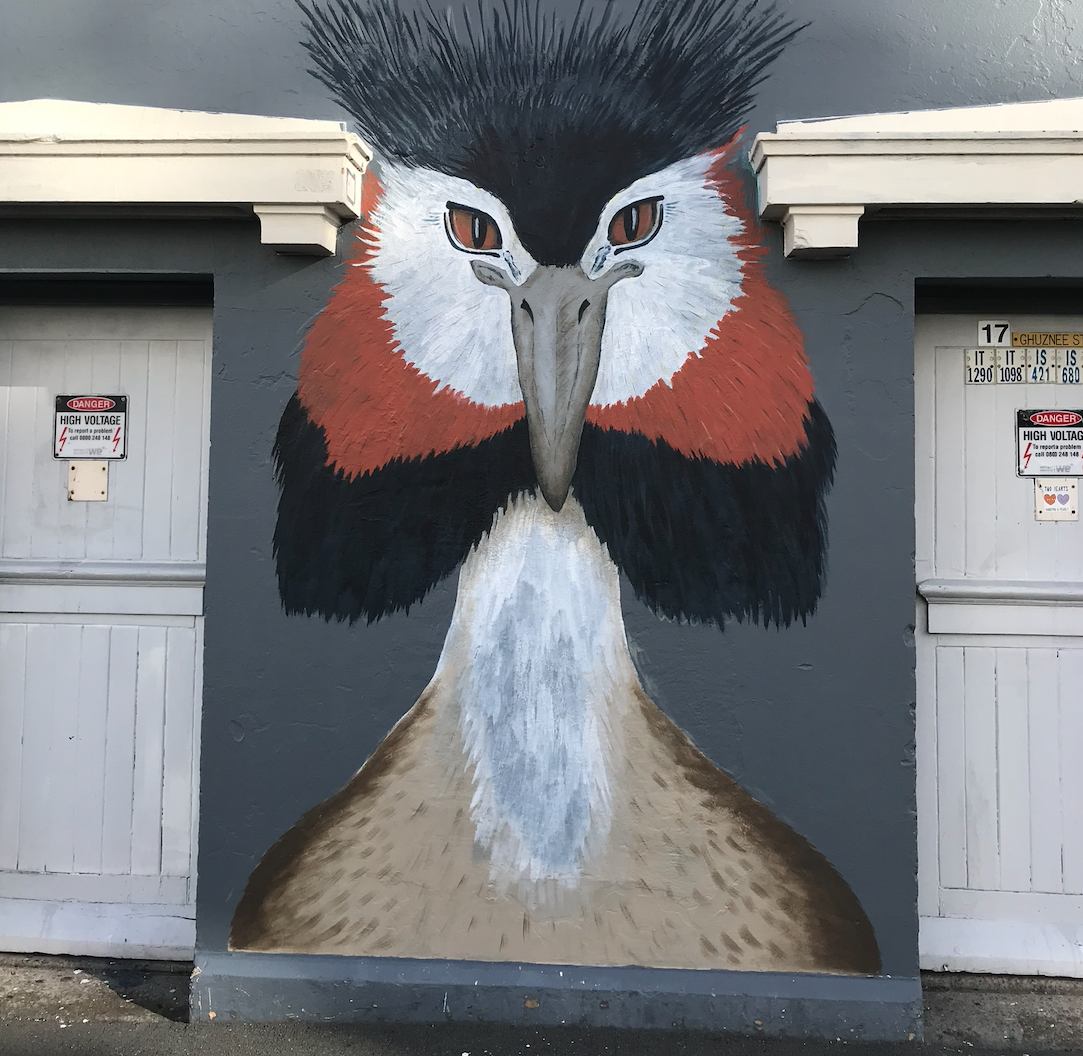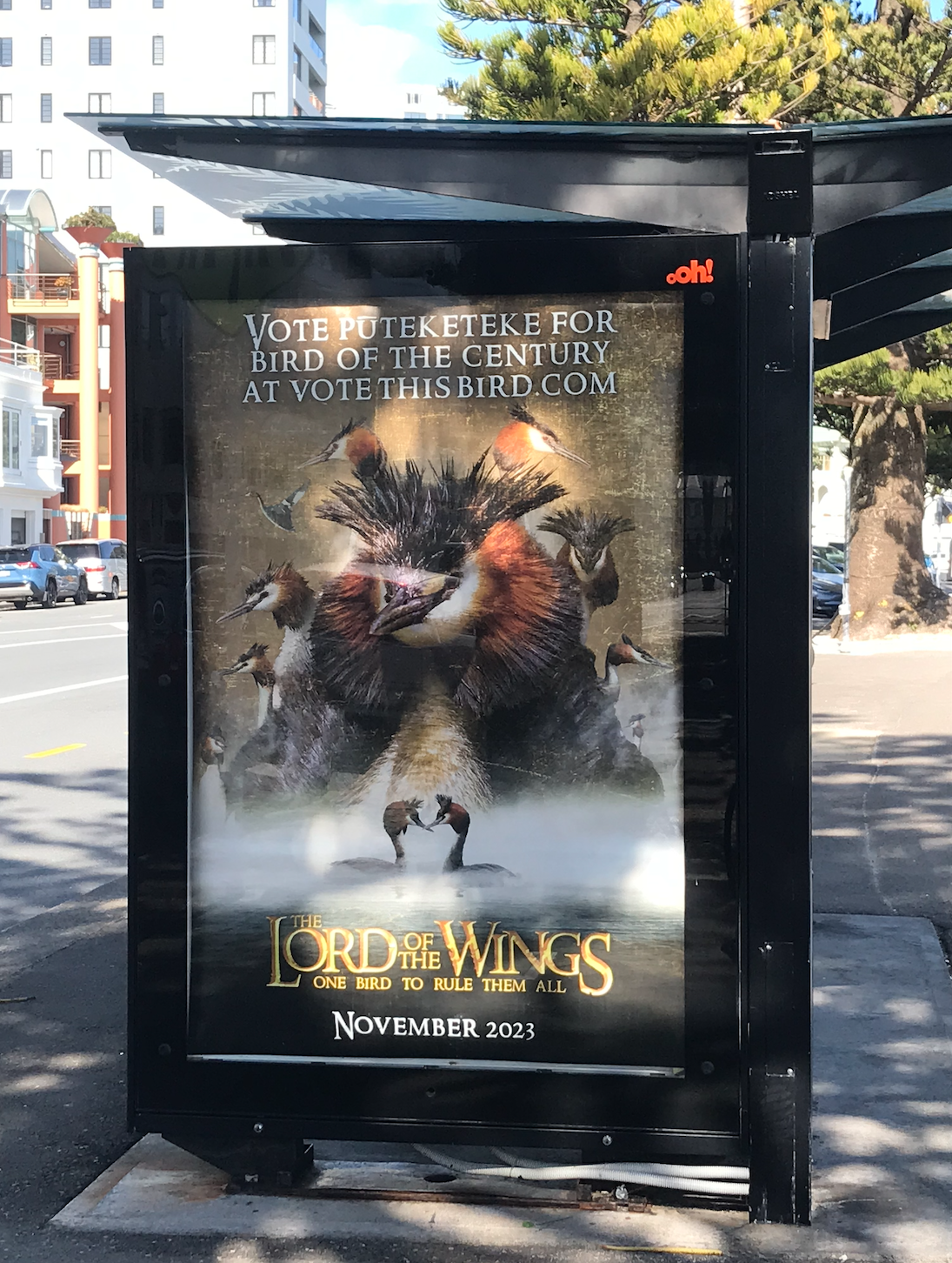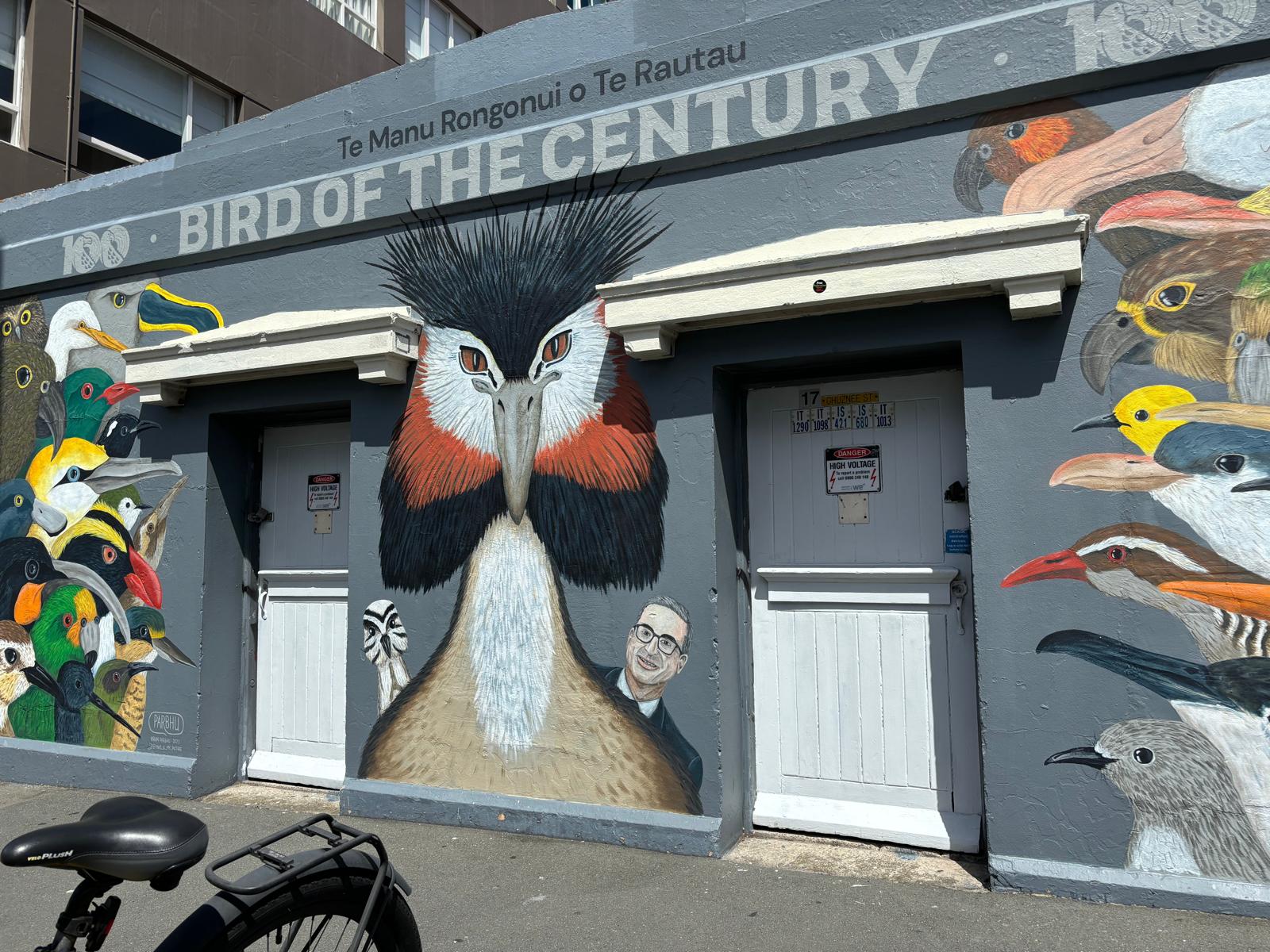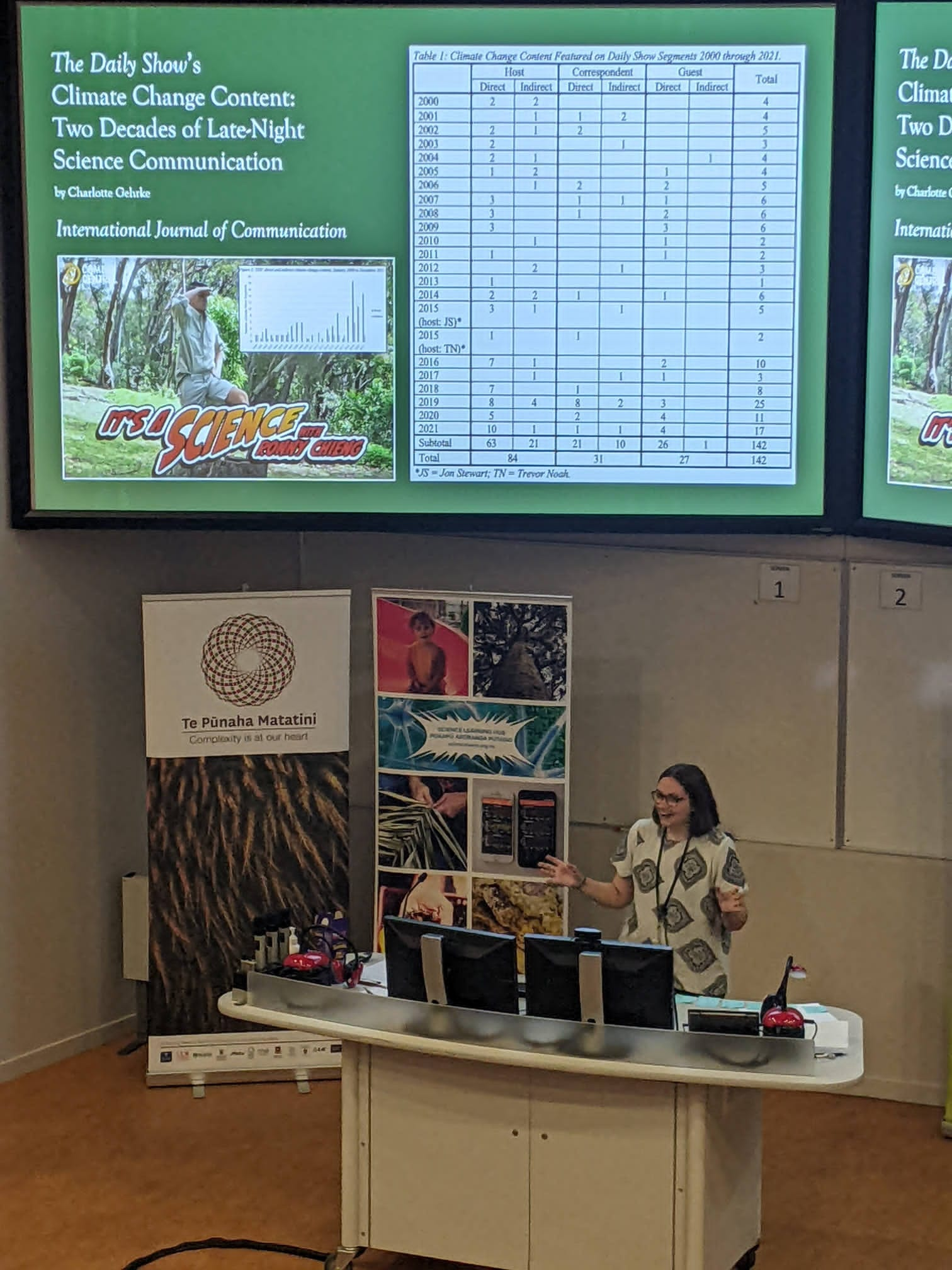By Charlotte Gehrke, PhD student, Nord University, about her time as a visiting researcher in New Zealand
In November 2023, I had the unique opportunity to join the annual conference of the Science Communication Association of New Zealand (SCANZ) in Aotearoa’s capital city Wellington. At the time, I was a visiting researcher at the Pūtaiao ki te Pāpori School of Science in Society at the Te Herenga Waka Victoria University of Wellington.

I had initially planned to simply attend the SCANZ conference to learn more about the science communication community in New Zealand as part of my research stay. However, after mentioning my interests in new and out-of-the-box approaches to science communication during morning tea at the School of Science in Society, I quickly found myself included in the conference programme. In addition to joining a panel on generative AI applications for science communication, I ended up giving a lightning talk about my research on science communication on late-night television.
While I had initially planned to present a paper entitled The Daily Show’s Climate Change Content: Two Decades of Late-Night Science Communication, my plans were thwarted when a foreign election interference scandal rocked New Zealand. To be precise, I am not referring to the 2023 general election but rather what many described to me in a bit of tongue-in-cheek humor as the “more important” election of the year: Bird of the Century. The latter is a competition run by the conservation organization Forest & Bird, which also runs the annual Bird of the Year competition, in an effort to raise funds and awareness for (avian) conservation issues.

A few weeks before my presentation at SCANZ, the American late-night show Last Week Tonight with John Oliver decided to join the competition in which groups of passionate conservationists can lobby and campaign for their preferred Bird of the Year or Century. Specifically, Last Week Tonight started a global campaign for the pūteketeke to be crowned Bird of the Century. The pūteketeke, also known as the Australasian crested grebe, can be found in Australia and New Zealand where it is considered nationally vulnerable.
Oliver’s show often features hard-hitting yet humorous pieces about a wide range of topics, and the Bird of the Century campaign is not Oliver’s first foray into avian activism, with the host previously covering the hot topic of duck-themed stamps. While this might just sound like yet another late-night segment or PR campaign, something comedy and communication scholars might dismiss as so-called slacktivism, it is important to stress the real-life impacts of Last Week Tonight’s pūteketeke campaign.

In my lightning talk, I did just that, highlighting not only the impacts of Oliver’s pūteketeke segments on the (inter)national conversation surrounding the Bird of the Century competition, but also the show’s massive impact on voting, and, perhaps even more importantly, donations. While some have criticized Oliver’s involvement as “fowl play,” the competition organizers repeatedly expressed their appreciation for the pūteketeke campaign. A member of Forest and Bird came up to me after my presentation to confirm the positive impact of Last Week Tonight’s involvement in Bird of the Century.
Flagship species and competitions, like the pūteketeke and Bird of the Year or Century, can facilitate and support environmental protection efforts around the globe. In my doctoral research, I explore how polar flagship species – polar bears, seals, walruses, whales, etc. – and the environmental issues they face are discussed by scientists, journalists, policymakers, and more.

Charlotte Gehrke is a PhD Fellow at Nord University’s Research Division for History, Geography, and International Relations. She also co-created and manages the Arctic Relations blog.